SILBATONE RP-300 POWER AMPLIFIER
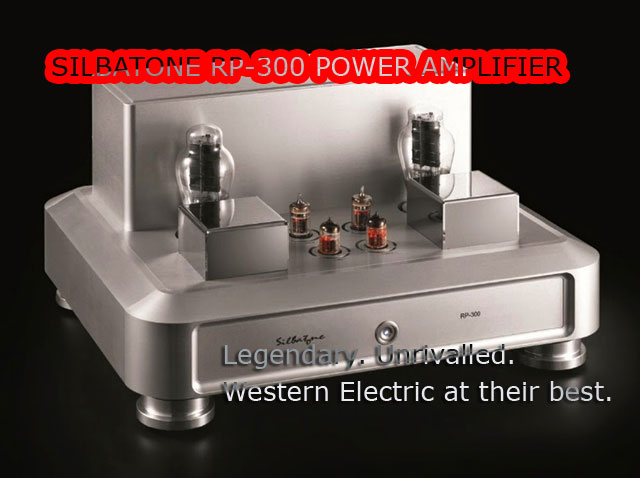
Ah, the 300B. Legendary. Unrivalled. Western Electric at their best.
Or just overpriced, overrated hype?
 My very first hifi amplifier (not counting a Rotel budget item, the 865-AX or something) was a 300B amplifier. It was an Audio Note Kit One. Lured by promises of out-of-this-world tone, tube warmth like no other, and mystical experiences inspired without the assistance of banned substances, I bought the amp in 1995 and tried to get into what the punters (Japanese, French and latterly, the Americans) were talking about.
My very first hifi amplifier (not counting a Rotel budget item, the 865-AX or something) was a 300B amplifier. It was an Audio Note Kit One. Lured by promises of out-of-this-world tone, tube warmth like no other, and mystical experiences inspired without the assistance of banned substances, I bought the amp in 1995 and tried to get into what the punters (Japanese, French and latterly, the Americans) were talking about.
By and large, with the help of sensitive Lowther Acousta and PM6As, I could hear some of that promised magic, some of the time. In some recordings. Sometimes, when the moon was in the right position and the stars were properly aligned. But I was never able to fully understand what the fuss was about. Self-doubt started to creep in. Am I a Philistine, with leaden ears and a soul of stone, no longer capable of recognizing true beauty when I see it? All that musical ecstasy that the 300B advocates seemed to be wrapped up in, I could only catch glimpses of it in some intimately recorded female vocals with sparse accompaniment, for a few minutes at a time. These recordings formed less than 5% of my entire collection. Did that disqualify me from the exclusive 300B club which I badly wanted to be part of?
Over time, I moved on to other things, and other amplifiers, both tubes and solid state. I still tried to hear every 300B amplifier that I was able to get access to, but none of them took me to that promised land of milk and honey. So when the local dealer told me about the Silbatone RP-300 some weeks ago, I was piqued but not exactly thrilled to bits. For all I knew, it was just another 300B amplifier.
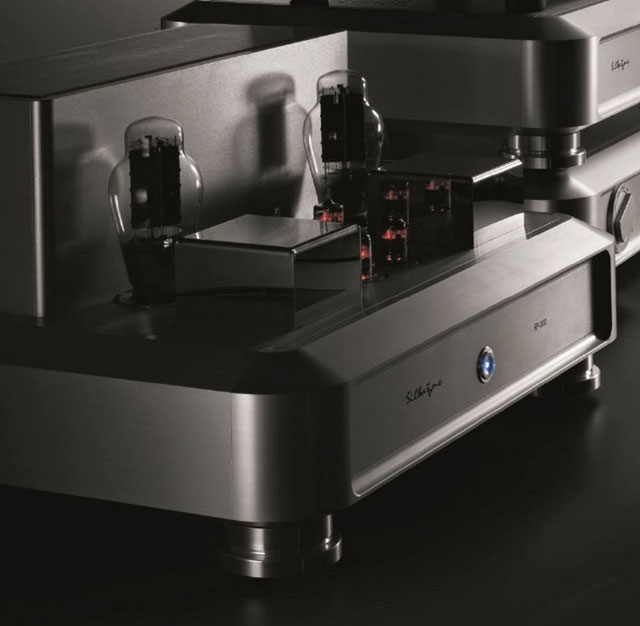
SILVER, SILVER EVERYWHERE! NOR A DROP OF CAPACITOR
 Well, it wasn’t. Just the amount of silver being used in the amp is so far beyond anything else that has ever been done, it seems almost insane. Then again, Silbatone has never been known to do anything that is run-of-the-mill or ordinary. Founded and helmed by veteran Korean audiophile Michael Chung, Silbatone has employed the services of JC Morrison, tube-circuit genius extraordinaire, to come up with a series of cost-no-object designs that the world has never seen, heard or even imagined. Morrison, who is reputed to never have accepted employment with any other hifi manufacturer, agreed to work exclusively with Silbatone after speaking with and understanding the passions of its founder. Many ground-breaking creations followed, but amongst it all, Michael Chung really wanted to discover what the 300B was really capable of. So, armed with a brand new design, one that utilized a current feedback topology using interstage transformers (silver-wired, of course), Silbatone took a 12AY7 and a Bendix 6900 and coupled these directly to the grid of the 300B. Simple, direct, and without a single coupling capacitor in the entire signal path. Silver litz wire is used in all critical applications throughout the amplifier, and the oversized output transformers are wound with silver foil. All this in an all-out, no-holds-barred attempt to place the 300B tube in the best light possible. Needless to say, the 300B itself must be of the best quality. Michael Chung decreed that, for all Silbatone amplifiers, only original Western Electric 300Bs must be provided and used. Finally, all this precious commodity is encased in a silver coloured non-magnetic chassis, with the transformers potted in mirror-polished enclosures, and a fit-and-finish that makes a Lamborghini look like an experiment by unskilled child labor.
Well, it wasn’t. Just the amount of silver being used in the amp is so far beyond anything else that has ever been done, it seems almost insane. Then again, Silbatone has never been known to do anything that is run-of-the-mill or ordinary. Founded and helmed by veteran Korean audiophile Michael Chung, Silbatone has employed the services of JC Morrison, tube-circuit genius extraordinaire, to come up with a series of cost-no-object designs that the world has never seen, heard or even imagined. Morrison, who is reputed to never have accepted employment with any other hifi manufacturer, agreed to work exclusively with Silbatone after speaking with and understanding the passions of its founder. Many ground-breaking creations followed, but amongst it all, Michael Chung really wanted to discover what the 300B was really capable of. So, armed with a brand new design, one that utilized a current feedback topology using interstage transformers (silver-wired, of course), Silbatone took a 12AY7 and a Bendix 6900 and coupled these directly to the grid of the 300B. Simple, direct, and without a single coupling capacitor in the entire signal path. Silver litz wire is used in all critical applications throughout the amplifier, and the oversized output transformers are wound with silver foil. All this in an all-out, no-holds-barred attempt to place the 300B tube in the best light possible. Needless to say, the 300B itself must be of the best quality. Michael Chung decreed that, for all Silbatone amplifiers, only original Western Electric 300Bs must be provided and used. Finally, all this precious commodity is encased in a silver coloured non-magnetic chassis, with the transformers potted in mirror-polished enclosures, and a fit-and-finish that makes a Lamborghini look like an experiment by unskilled child labor.
And the price of such a heroic incarnation of the 300B amplifier? USD $100,000.00. Yes, you read that right. Michael assures me that this is a fair reflection of the cost of the parts and production cost. His pricing policy is simple – just take the cost and add a small margin, but definitely not the 50-100% that other manufacturers routinely practice. Seen from this perspective, that USD $100k actually begins to look reasonable. At least you know you’re not being royally fleeced.
SOUND QUALITY
My mission, therefore, which I chose to accept, was to test if Michael’s Herculean efforts in producing a 300B amplifier to end all 300B amplifiers has actually paid off. To ensure that the peripherals were of commensurate quality, I had the RP-300 drive a pair of very sensitive GIP Western Electric replica horn speakers, and fed it signals from the excellent Kronos Pro turntable.
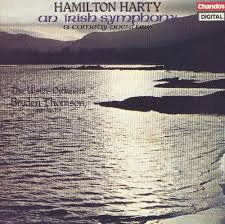 I began my listening session with the first movement of Hamilton Harty’s An Irish Symphony (Chandos ABRD 1027). The first thing that greeted me through this system was an extremely even, well-balanced sound which did not seem to unnaturally emphasise any part of the frequency band. This was a welcome change from almost every other tube amplifier I had heard, never mind a 300B-driven one. Needless to say, the RP-300 majored in supreme refinement, allied to an almost grainless treble, which created an effortless sound that one can very easily disappear into. Perhaps this was the magical bubble of illusion that many 300B lovers were enthusing about? I did detect a very slight tendency to (over?) bloom at around the 70Hz region, but it was really very minor and could have been a room or speaker artefact rather than the fault of the amplifier. I had never heard how a “mere” 8 watts per channel of 300B power was able to present large orchestral crescendos and cavernous lower strings without so much as breaking out a single bead of sweat. Of course, the high sensitivity of the GIP horn system helped not a little bit, but it was truly spectacular and takes nothing away from the amazing abilities of the RP-300.
I began my listening session with the first movement of Hamilton Harty’s An Irish Symphony (Chandos ABRD 1027). The first thing that greeted me through this system was an extremely even, well-balanced sound which did not seem to unnaturally emphasise any part of the frequency band. This was a welcome change from almost every other tube amplifier I had heard, never mind a 300B-driven one. Needless to say, the RP-300 majored in supreme refinement, allied to an almost grainless treble, which created an effortless sound that one can very easily disappear into. Perhaps this was the magical bubble of illusion that many 300B lovers were enthusing about? I did detect a very slight tendency to (over?) bloom at around the 70Hz region, but it was really very minor and could have been a room or speaker artefact rather than the fault of the amplifier. I had never heard how a “mere” 8 watts per channel of 300B power was able to present large orchestral crescendos and cavernous lower strings without so much as breaking out a single bead of sweat. Of course, the high sensitivity of the GIP horn system helped not a little bit, but it was truly spectacular and takes nothing away from the amazing abilities of the RP-300.
 My next disc was a long-time favorite, which I dug out specifically to hear how the RP-300 is able to deal with heldentenors in their prime. Stewart Burrows singing Gortnomona (L’Oiseau Lyre DSLO 43) is full of torture tracks in which Burrows holds back no punches. When he lets go, your system better be able to handle it, or it gets ugly real fast. Through the Silbatone, you could hear how well-controlled Burrows’ voice generally is, and the immaculate technique honed over decades of experience that he applies to these apparently simple songs. When Burrows sings them, they no longer sound simple. The stunning fact is that the RP-300 easily uncovered the layers of emotion contained in each little miniature, stripping it bare for me to understand – nay, emphathize – with the songwriter’s and Burrows’ unspoken intentions. At this point, you stop analysing the music in purely hifi terms and simply surrender to the moment. It is only after the song is over that you realize how well-reproduced the piano is, and how cleanly Burrows’ voice is presented with power and clarity, barring the bits where he probably overloaded the microphones anyway. You are brought back to the present even without being aware that you had been taken back to the past.
My next disc was a long-time favorite, which I dug out specifically to hear how the RP-300 is able to deal with heldentenors in their prime. Stewart Burrows singing Gortnomona (L’Oiseau Lyre DSLO 43) is full of torture tracks in which Burrows holds back no punches. When he lets go, your system better be able to handle it, or it gets ugly real fast. Through the Silbatone, you could hear how well-controlled Burrows’ voice generally is, and the immaculate technique honed over decades of experience that he applies to these apparently simple songs. When Burrows sings them, they no longer sound simple. The stunning fact is that the RP-300 easily uncovered the layers of emotion contained in each little miniature, stripping it bare for me to understand – nay, emphathize – with the songwriter’s and Burrows’ unspoken intentions. At this point, you stop analysing the music in purely hifi terms and simply surrender to the moment. It is only after the song is over that you realize how well-reproduced the piano is, and how cleanly Burrows’ voice is presented with power and clarity, barring the bits where he probably overloaded the microphones anyway. You are brought back to the present even without being aware that you had been taken back to the past.
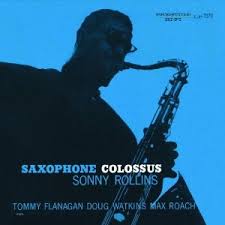 When you put on a classic LP such as Sonny Rollins’ “Saxophone Colossus” (Jazz Track 1006 LP), you must approach the listening with the right amount of reverence. Again, the RP-300 does that trick of transporting you to a different time and place, when the geniuses of four jazz giants fortuitously came together in a single recording session that made musical history. By all standards, “Saxophone Colossus” is one of those defining moments in mankind’s quest for musical beauty, and when you listen to it through the RP-300, you understand why. From the very first, familiar drum figure of St Thomas, followed by Rollins’ thick, multi-textured tenor entering the fray without wasting too much time, the Silbatone puts Rollins right smack in the centre of the sound stage, powerfully and with life-like ease. He literally towers over the entire band, a leviathan showering everyone with improvised musical ideas that seem almost composed and deeply thought-through. When he reaches for the lowest notes, the RP-300 shows that it is no slouch in reproducing the grunt required by the recording, and made it sound totally real. In my younger days, I used to play the alto sax, so I know the way it feels when the low Bb vibrates through the instrument, into the air and your fingers, arms and body. That was exactly how the RP-300 made Rollins’ tenor sound and feel that day. I was gobsmacked. How could a 300B do this? Is this really just a 300B amplifier? Sure, if you really wanted to be persnickety, you could say that Max Roach’s drums were not soundstaged with pin-point accuracy. But really, that would be missing the point with this amplifier. Everything else that makes a drum set sound like a drum set was there; crystalline detail, utter purity of tone, and compelling dynamics that you only get in live music. And when Rollins let his extended coda rip, it was magnificent beyond words. When he finished, I was left gasping for air.
When you put on a classic LP such as Sonny Rollins’ “Saxophone Colossus” (Jazz Track 1006 LP), you must approach the listening with the right amount of reverence. Again, the RP-300 does that trick of transporting you to a different time and place, when the geniuses of four jazz giants fortuitously came together in a single recording session that made musical history. By all standards, “Saxophone Colossus” is one of those defining moments in mankind’s quest for musical beauty, and when you listen to it through the RP-300, you understand why. From the very first, familiar drum figure of St Thomas, followed by Rollins’ thick, multi-textured tenor entering the fray without wasting too much time, the Silbatone puts Rollins right smack in the centre of the sound stage, powerfully and with life-like ease. He literally towers over the entire band, a leviathan showering everyone with improvised musical ideas that seem almost composed and deeply thought-through. When he reaches for the lowest notes, the RP-300 shows that it is no slouch in reproducing the grunt required by the recording, and made it sound totally real. In my younger days, I used to play the alto sax, so I know the way it feels when the low Bb vibrates through the instrument, into the air and your fingers, arms and body. That was exactly how the RP-300 made Rollins’ tenor sound and feel that day. I was gobsmacked. How could a 300B do this? Is this really just a 300B amplifier? Sure, if you really wanted to be persnickety, you could say that Max Roach’s drums were not soundstaged with pin-point accuracy. But really, that would be missing the point with this amplifier. Everything else that makes a drum set sound like a drum set was there; crystalline detail, utter purity of tone, and compelling dynamics that you only get in live music. And when Rollins let his extended coda rip, it was magnificent beyond words. When he finished, I was left gasping for air.
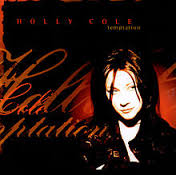 Actually, I can stop here and all the justification I would need to recommend the amplifier would be encapsulated in that one piece of music. However, I thought I would just put the final seal on the deal by reporting on some blues and folk vocals. Holly Cole’s The Briar and the Rose from her album “Temptation” (Blue Note JP5003 200g pressing) showed how faultlessly the RP-300 can track female vocals. We all know 300Bs are magical with vocals. But while Cole’s velvety voice came over with much expected ease and effortlessness, with each breath and lip movement reproduced with the alacrity of a live studio feed, the amplifier also showed its mettle with the brass and woodwinds that sounded meaty and rich, like a robust Bolognese sauce on semolina pasta. Tonally, all the instruments were spot on. All of them. I could not ask for more.
Actually, I can stop here and all the justification I would need to recommend the amplifier would be encapsulated in that one piece of music. However, I thought I would just put the final seal on the deal by reporting on some blues and folk vocals. Holly Cole’s The Briar and the Rose from her album “Temptation” (Blue Note JP5003 200g pressing) showed how faultlessly the RP-300 can track female vocals. We all know 300Bs are magical with vocals. But while Cole’s velvety voice came over with much expected ease and effortlessness, with each breath and lip movement reproduced with the alacrity of a live studio feed, the amplifier also showed its mettle with the brass and woodwinds that sounded meaty and rich, like a robust Bolognese sauce on semolina pasta. Tonally, all the instruments were spot on. All of them. I could not ask for more.
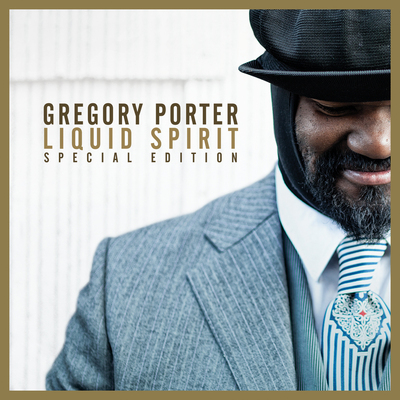 One LP that really brings home the 300B tube’s ability with male blues vocals is Gregory Porter’s “Liquid Spirit” (Blue Note 0602537431540). Cueing up Hey Laura, I was immediately greeted with rich, thick, bluesy tones from the GIP speakers. Porter’s voice was oh-so-smooth, silky beyond description, but padded with warm, chocolatey goodness at the same time. Most impressive of all was how present he sounded, how much the RP-300 was able to conjure up the illusion that the performer was right there in the room with me. I had to keep looking at the speakers to remind myself that they are still working. The RP-300 pulled this trick off again and again.
One LP that really brings home the 300B tube’s ability with male blues vocals is Gregory Porter’s “Liquid Spirit” (Blue Note 0602537431540). Cueing up Hey Laura, I was immediately greeted with rich, thick, bluesy tones from the GIP speakers. Porter’s voice was oh-so-smooth, silky beyond description, but padded with warm, chocolatey goodness at the same time. Most impressive of all was how present he sounded, how much the RP-300 was able to conjure up the illusion that the performer was right there in the room with me. I had to keep looking at the speakers to remind myself that they are still working. The RP-300 pulled this trick off again and again.
CONCLUSION
How do I summarise a product like the RP-300? Well, the obvious elephant in the room is its price. Actually, I think that for anyone to expect somebody else to share his or her own value judgements of objects is unrealistic. Not everyone has the same level of purchasing power, the same set of priorities, or the same lifestyle. So really, justifying USD100k on a power amplifier is really a no-brainer. If you can afford it and you want it, there is no reason not to get it. Period. It should not be more complicated than that.
Should you want it? Well, that boils down to how it makes one feel when listening to it. To me, the RP-300 does all the hi-fi things to the letter, except for limitless power and grunt, for which you will have to forget about tubes and get a big hulking solid state amplifier anyway. But more than that, it takes you to a whole new level of experiencing recorded sound. I have never heard the 300B tube do the things it does in this amplifier. The way it drives a loudspeaker is unprecedented for a 300B, in my experience. The way it emotes is a life-changing experience. This is truly the way a 300B amplifier should sound, and it makes every other 300B amp I have heard sound wrong or broken, or at best, inadequately executed. From this vantage point, Michael Chung has definitely done what he set out to do.
I have said it before and I will say it again – if you want to hear what the 300B tube can really do, you must listen to the Silbatone RP-300.

Stephen Yan
Specifications:
Silbatone RP-300
Price: $100,000.00 USA
Silbatone Acoustics
#1006 Byuksan Digital Valley III
212-13 Guro-dong, Guro-gu
Seoul, KOREA
Tel: 82-2-855-8410
Fax: 82-2-855-8412
Mobile: 82-11-768-1037
Email: office@silbatoneacoustics.com
Website: www.silbatoneacoustics.com
Stereo Times Masthead
Publisher/Founder
Clement Perry
Editor
Dave Thomas
Senior Editors
Frank Alles, Mike Girardi, Key Kim, Russell Lichter, Terry London, Moreno Mitchell, Paul Szabady, Bill Wells, Mike Wright, Stephen Yan, and Rob Dockery
Current Contributors
David Abramson, Tim Barrall, Dave Allison, Ron Cook, Lewis Dardick, Dan Secula, Don Shaulis, Greg Simmons, Eric Teh, Greg Voth, Richard Willie, Ed Van Winkle, and Rob Dockery
Music Reviewers:
Carlos Sanchez, John Jonczyk, John Sprung and Russell Lichter
Site Management Clement Perry
Ad Designer: Martin Perry





Be the first to comment on: SILBATONE RP-300 POWER AMPLIFIER